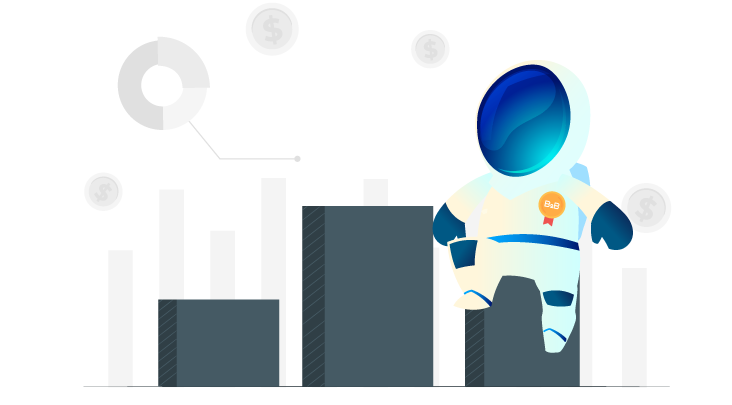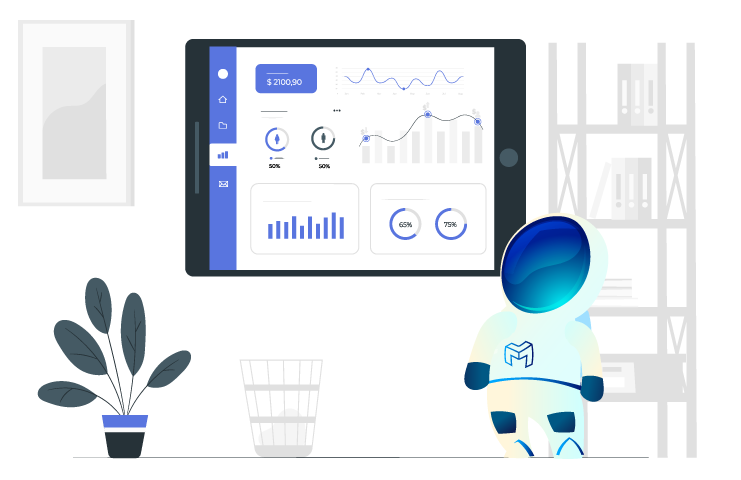
5 min reading - Last update: February 21, 2023
BtoC/BtoB : what are the best times to send your campaigns?
He results of your emailing campaigns depend on a large number of parameters: the business type, the product, the message... One of those parameters is the sending date and time. How to choose the best time to send your marketing campaign? What are the differences between BtoC and BtoB? How to define your own best sending time? Let's see in 3 minutes, how to improve your marketing results.
The best times to send BtoC emailing campaigns 📧

You have a BtoC business:
Your marketing campaign should be scheduled following consumers' habits.
People mainly open their mailboxes outside working hours and on mobile. To have a high opening rate, you need to ask yourselves the following questions: when are your consumers in front of their mobile screen? When are they more receptive to commercial emails and likely to interact?
Generally, the best times to send your BtoC emailing campaigns are:
-
- early in the morning: when people are waking up or in public transport
- early in the afternoon: during the lunch break
- around 20 pm: when people are back home after a day work
-
The best times to send BtoB emailing campaigns ✉️

You have a BtoB business:
The best time to send your emailing campaigns depend on several factors such as the sector of activity, the target's position...
But it's highly recommended to send your marketing campaigns at these times:
-
- between 11 am and 14 pm: these times are the best to interact with professionals because they have fewer demands.
- around 17 pm: senior executives tend to read their mails around 17/18 pm.
- on Tuesday and Thursday: these days are the best to send your emailing campaigns. Indeed, the higher opening rates are reported on Tuesday and Thursday.
-
The basic rules 📑

Some basic rules can be applied on any type of businesses:
-
- you should create a regular meeting: we advise you to ask your users how often they want to receive mails from you. According to the responses, you can send your campaigns regularly (for example twice a month). In that way, you make sure people won't be bothered by your messages.
- you should avoid Monday and Friday: people are busy at work on Monday. On Friday, they usually work in a hurry to get the job done before the weekend.
- you should avoid holidays periods: on holidays, the professional mailboxes aren't opened.
-
Beyond these rules, it's possible to define your own best programming schedule. Let's see how to proceed!
How to define the best times to send your campaigns according to your business? ⏱️
- Look at when your customers are most active and when they are likely to be engaged with your brand.
- Pay attention to industry trends. If there is an emerging trend in your industry, consider testing it to see if it works for you.
- Consider the geographic location of your target audience. Different countries and cities have different time zones, so adjust your campaigns accordingly.
- Consider the type of campaign you are sending. Different types of campaigns may require different timing depending on their purpose or objective.
- Test different times and days for sending campaigns. Try different times and days of the week to see which ones generate the most engagement and conversions.
- Keep an eye on the competition. Look at what other companies in your industry are doing.
There is nothing better than testing 👊

All the tips mentionned above are based on general cases. The best way to reach your marketing goals is still to make your own tests. Compare several newsletters by sending them to a subset of your subscribers at different times. It's necessary to ensure that the testing is done in a regular period (no special events, holidays...). Then analyse the results to send the next campaigns at the right time.
Whatever you do, measure the results 🔥

Performance measure is the key part of the process. Some data are more important than the others. Here is the top list :
-
- the opening rate : the opening rate is the first way to evaluate your newsletter. Make sure that the difference between two campaigns isn't due to the mails' subjects. To go further, this data can be mixed with opening hours.
- the click rate : the click rate shows up how much the target has interacted with you and/how much the target was interested to your content.
- the unsubscribe rate : the unsubscribe rate is a good indicator. It helps to know if it's the right time to interact with your users or not.
-
The conclusion 💡
To put it in a nutshell, it's better to send your campaign during the week. The day and hour depends on the sector of activity and your users' profiles. If it's possible, make your own tests by sending campaigns at different times. The results analyse will help you to define the best calendar schedule.





